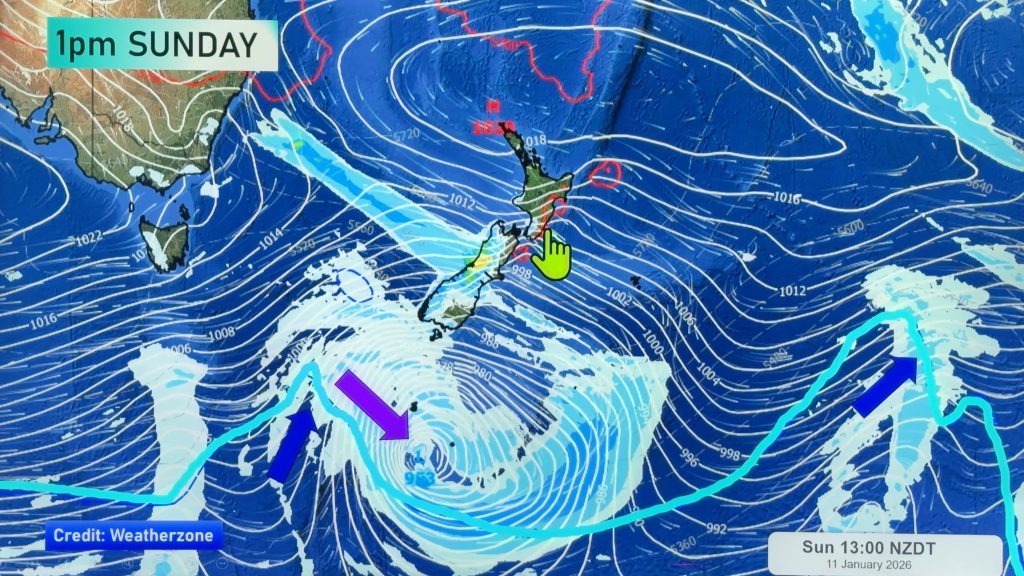
> From the WeatherWatch archives
For a country that is surrounded by water, perhaps rather surprisingly, top maximum temperatures have hit the 40’s (albeit on one particular day!).The waters around the country are relatively cool but occasionally, very warm air descends from the north or is blown across the Tasman from the interior of Australia, resulting in hot nor’ west winds advancing across the nation.
Overall , average temperatures are warmest as you head north, with Kaitaia having the highest average mean temperature of almost 16 degrees.Oddly enough though, the highest ever temperature in Kaitaia has barely hit 30 degrees. Only a handful of places around the country have recorded similar top temperatures, as many other regions have soared into the 30’s.
To the main centres and Aucklands Albert Park has hit a top of 34.4 degrees whereas the airport has registered a maximum of 30.5 degrees, Hamilton has nudged 35, Wellingtonians have enjoyed 31.1 degrees, Christchurch has sizzled up to 41.6 and Dunedinites have almost clocked up 36 degrees.
The 7th of February, 1973 is a day that has gone into the New Zealand weather history books as many records were broken up and down the country. Very hot northwesterly conditions prevailed ahead of a cold front and temperatures broke the 40 degree barrier across a number of eastern areas of the country for the first time.
By the end of the day, a record 42.4 degrees had been clocked up in Jordan in Marlborough and Rangiora, near Christchurch.The Garden city wasn’t too far behind with 41.6 degrees but due to the heat, scrub fires and buckled railways tracks were not an uncommon site.
Inland areas during the height of summer can see temperatures soar especially under anticyclonic conditions. The lack of a seabreeze can make conditions fairly oppressive and occasionally humidity in northern areas appear to make it ‘ feel ‘ even more unbearable.
Even though generally the average highs belong to northerners, the extremes take place inland and out further east, so therefore the hottest and the coldest temperatures occur in these areas.
Alexandra frequently hones in on 30 degrees during late spring,summer and early autumn but cool southerly periods at times can keep the overall summer figure down.The official high for Alex is 37.7 but the overnight lows are often crisp and pull down the mean average. Kawerau is very warm in summer and is often the North Islands warmest centre during the day, as the lack of wind keeps the thermometer high.
Top temperatures around NZ include Whangarei with 30.8,Tauranga 33.7, Rotorua 31.5, New Plymouth 30.3, Palmerston North 33, Napier 35.8, Nelson 36.3, Kaikoura 35, Hokitika 30, Timaru 37.2 and Invercargill 32.2.
Overnight lows are generally highest in Northland and Auckland during the summer season with humidity and warmer ocean temperatures aiding the muggy nights at times.
Extreme heat is rare in this part of the world compared to many other countries but perhaps we just like it that way!
Weather Analyst-Richard Green
Comments
Before you add a new comment, take note this story was published on 24 Nov 2008.





Add new comment
SW on 24/11/2008 5:24pm
Wished Auckland would get some of the higher daytime maximums that the rest of the country always gets.Even Invercargill has a higher frequency of them than us.
Reply
WW Forecast Team on 24/11/2008 6:45pm
Yes it’s quite remarkable that a city that averages more than 5 degrees cooler than Auckland during the summer overall, can register more days above 30 degrees than its northern counterpart.
Although a fine spell in the city of sails is fantastic and sometimes combined with humidity, it can feel hotter than 30 degrees!
Cheers
Richard
Reply